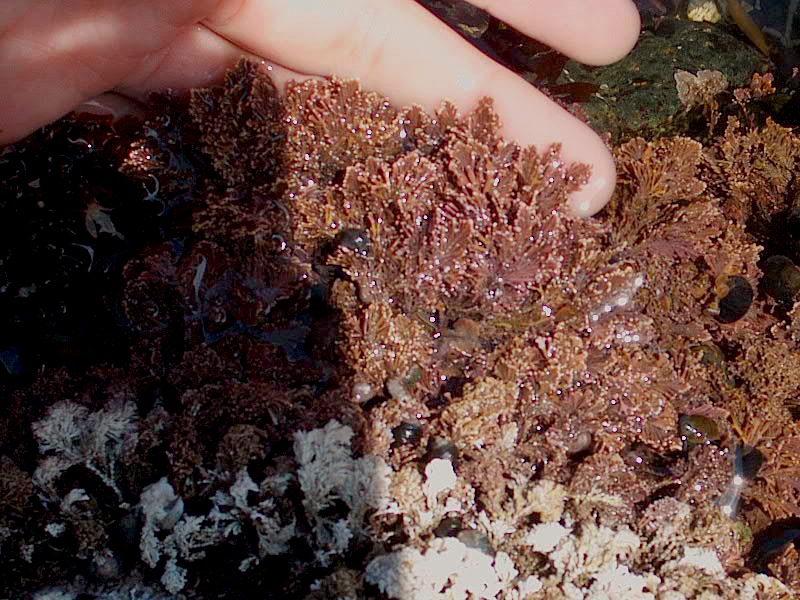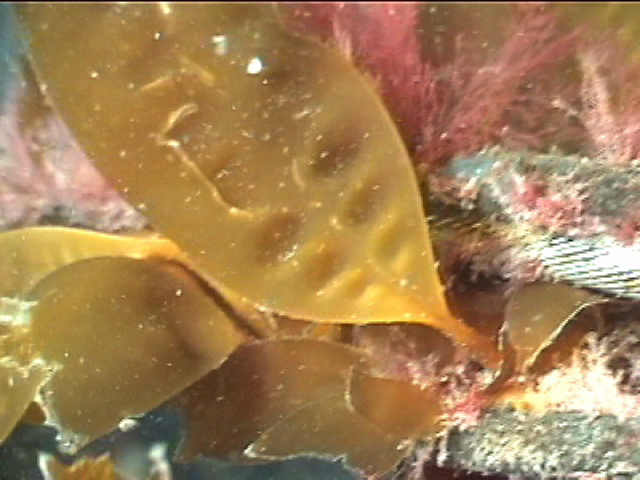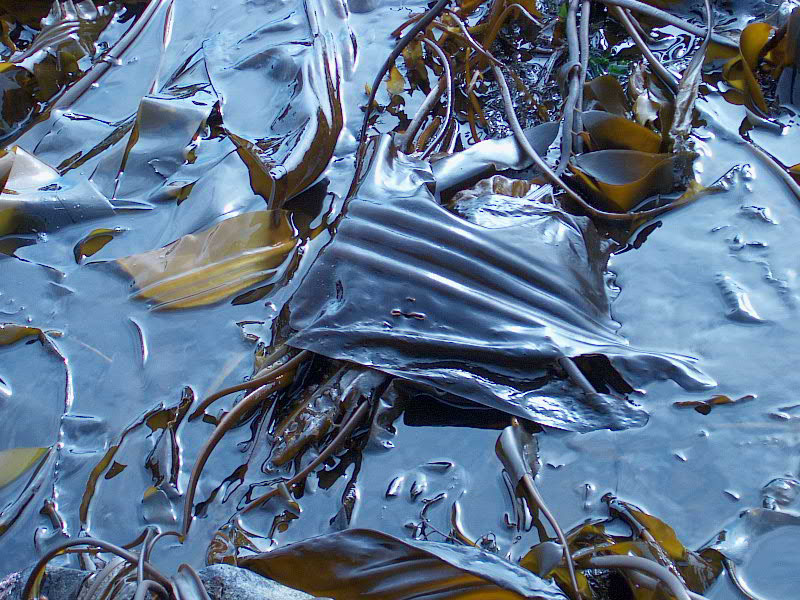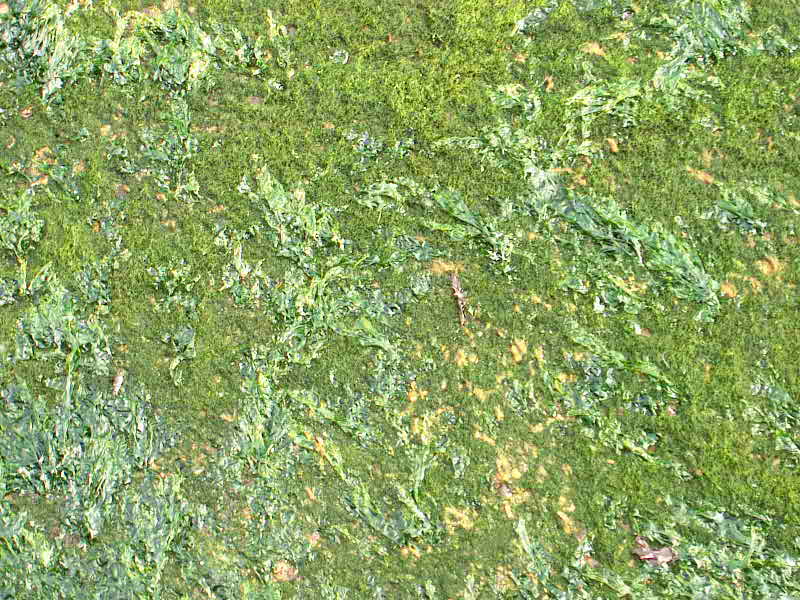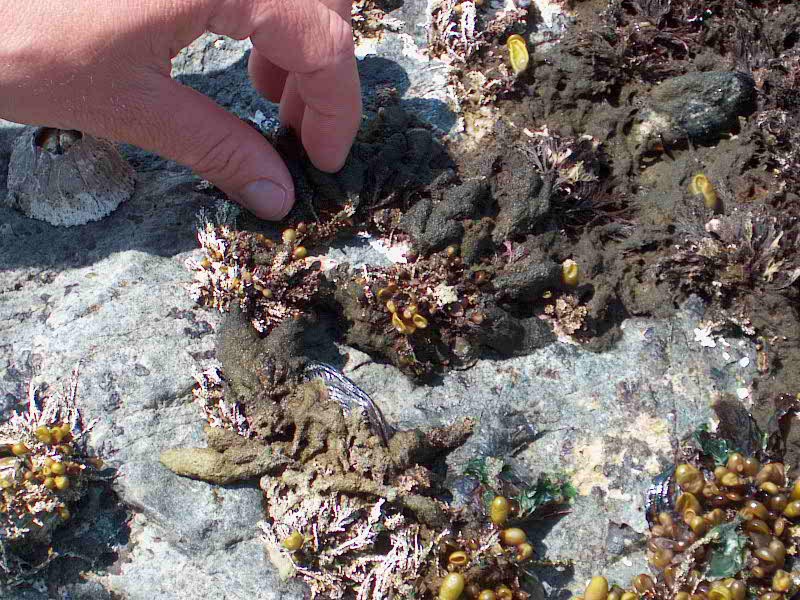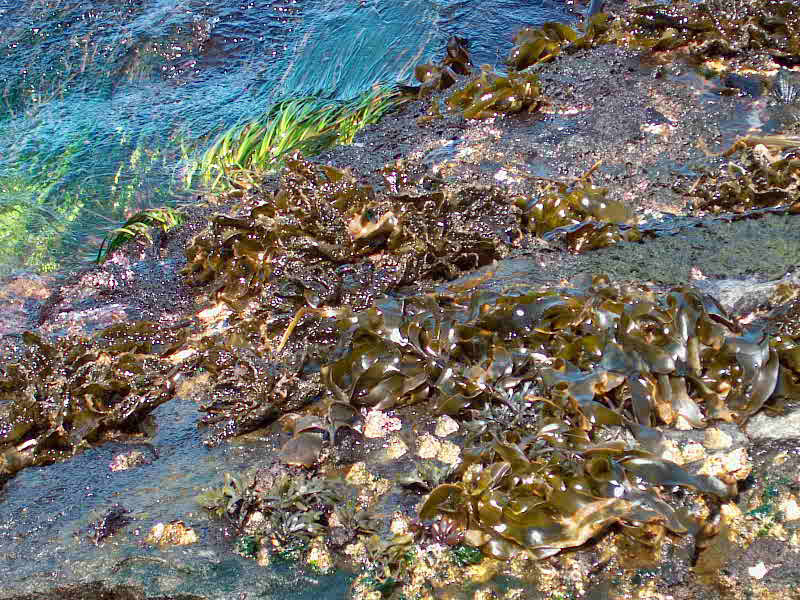All the Desmarestias have high acid content. You often see them bleached out on the beach, and they will also bleach any adjacent algae.
Phylum: Phaeophyta
Class: Phaeophyceae
Order: Desmarestiales
Family: Desmarestiaceae
Desmarestia intermedia (Postels and Ruprecht)
Description: This plant is dark brown in colour, up to 60 cm. high, very profusely branched, wiry; branches mostly compressed, about 1.5mm. wide except near the base, where the main axes are up to 5 mm. wide and cylindrical. Branching is fasiculate below, mostly alternate above, occasionally opposite.
Habitat: On rocks in the upper subtidal zone.
Pacific Coast Distribution: Bering Sea to Oregon.
Robert Scagel, 1972
Other Phaeophytes or Brown Algae at Race Rocks
 The Race Rocks taxonomy is a collaborative venture originally started with the Biology and Environmental Systems students of Lester Pearson College UWC. It now also has contributions added by Faculty, Staff, Volunteers and Observers on the remote control webcams. -Ryan Murphy 2005 The Race Rocks taxonomy is a collaborative venture originally started with the Biology and Environmental Systems students of Lester Pearson College UWC. It now also has contributions added by Faculty, Staff, Volunteers and Observers on the remote control webcams. -Ryan Murphy 2005 |


